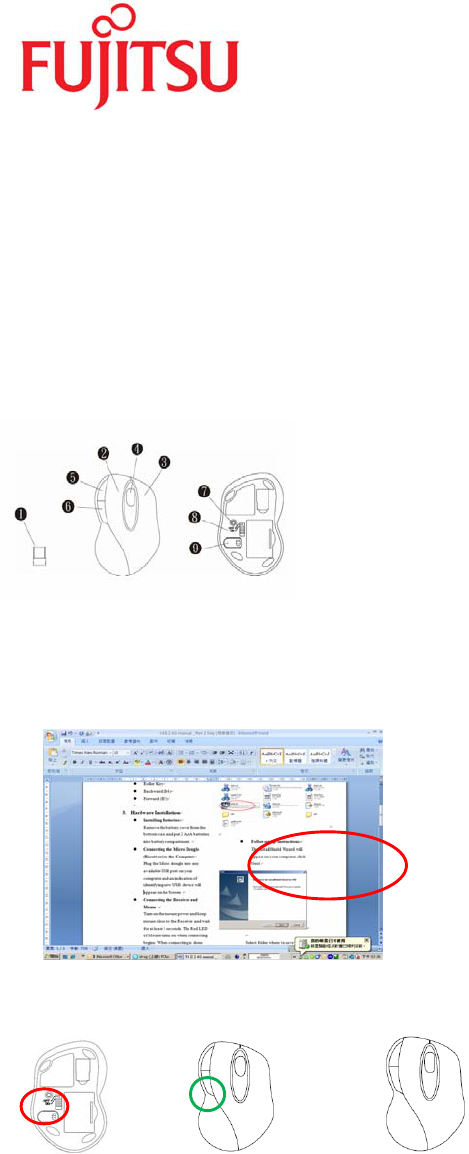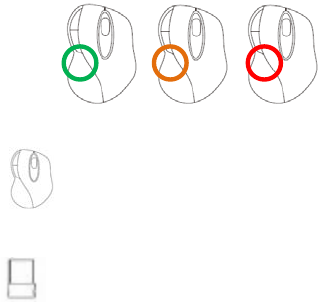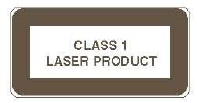KYE SYSTEMS KM010 Wireless Laser Mouse User Manual
KYE Systems Corp Wireless Laser Mouse
User manual

Wireless laser mouse
User’s Manual
1. Contents
z 2.4GHz Laser Mouse
z Micro Dongle
z Two AAA Batteries
z Mouse Driver CD
z User’s Manual
2. The RF mouse overview
(1) Micro Dongle (7) Connect button
(2) Left Key (8) Power ON/OFF
(3) Right Key (9) Laser LED
(4) Roller Key
(5) Backward (B4)
(6) Forward (B5)
3. Hardware Installation
z Installing Batteries:
Remove the battery cover from the bottom case and put 2 AAA batteries into battery compartment.
z Pairing the Micro Dongle (Receiver) to the Computer
Plug the Micro dongle into any available USB port on your computer and an indication of identifying new
USB device will appear on the Screen
●Pairing the receiver and mouse
Turn on the mouse power, keep the mouse close to the receiver and
wait for at least 5 seconds. For the 1st pairing, the Green LED of
mouse turns on when pairing begins. After pairing successful, the
Green Led turns off automatically and an indication of new input
device will appear. The user can now start to enjoy the RF mouse. Note: If the Mouse is not first time use and had
been “Turn Off” the power under different Resolution, when you “Turn ON” the power again, then it will appear
the last memory resolution LED light.
5 seconds Bottom Green LED “On” “Off”
4. Driver Installation (Notice: The driver supports Windows 2000 XP and Vista)
Installation of driver CD will be done automatically once the CD is plugged in and recognized. In case it doesn’t
work, please try steps below:
z Insert the driver CD

z Double click “Setup.exe”
z Follow set-up instructions:
The InstallShield Wizard will appear on your computer, click “Next”.
Select folder where to save the files and click “Next”.
Setup Status
Click Finish to complete setup.
A mouse icon will appear on the task bar.
5. Battery Notice
z When Red LED indicator appears, it means battery low. Please change the batteries immediately.
TOP RED LED will be Flash
6. DPI Change and Indications

z Press Right key and Wheel key at the same time for 3 seconds to change the DPI setting:
z Green Led – 800dpi (Default)
z Amber Led – 1200dpi
z Red Led – 1600dpi
Æ Æ
Green Æ Amber Æ Red
7. Specifications
〔Mouse〕 Weight : 86.5g
- Dimensions : 102.5(L)mm x 69.3(W)mm x 40.2(H)mm
- Power: Power rating 2.4V~3.2V DC; Current : 10mA( Max) @ 3V at Active mode.
〔Receiver〕Weight : 1.65g
-Dimensions : 18.89(L) x 12.98(W) x 5.62(H)mm
8. System Requirements
-IBM or compatible PC
-Compatibility (1) Hardware: USB Port
(2) Operating Systems: Windows 2000, XP SP2, Vista 32/64bit
9. Certification
See label under Mouse module
10. Operating Tips
z Avoid using the mouse on a metal surface. Metals such as iron, aluminum, or copper shield the radio frequency
transmission and may slow down the mouse’s response time or cause the mouse to fail temporarily.
z The mouse enters to Sleep mode whenever your computer does. To activate the mouse, just move or click the
mouse.
z Laser mouse works best in non-reflective surface.
If cursor movements are lagging, placing the mouse on a mouse pad will help. Darker surface requires more
energy to operate thus consumes more battery power.
z Different battery types and temperatures may affect the battery performance.
z The battery and the wireless module may be warm when being used continuously for an extended period of time.
This is normal and not a malfunction.
z Conserve the battery power by switching the on/off switch to “off” position while traveling or if the mouse will
not be in use for awhile. If you will not use the mouse for a long period of time. Remove the batteries from the
battery compartment.
11. Troubleshooting
When the mouse doesn’t work:
z Make sure that the polarity of the batteries is correct. The positive (+) and negative (-) ends of each battery must
match the right connections in the battery compartment.
z Check if the receiver’s USB plug is firmly connected to the USB port on your computer.
z Make sure that the appropriate device drivers are installed.
z Make sure that you have made a radio link between the mouse and its receiver.
The response time of the mouse is slow or the mouse intermittently stops working
z Make sure the power of battery is sufficient
z Turn off any wireless devices and their base units that are near the mouse’s receiver.
z If you are using the mouse on a metal surface, move it to a non-metal surface. Metals such as iron, aluminum, or
copper shield the radio frequency transmission and may influence the mouse’s response time or cause the mouse
to fail temporarily.

Federal Communication Commission Interference Statement
This equipment has been tested and found to comply with the limits for a Class B digital device,
pursuant to Part 15 of the FCC Rules. These limits are designed to provide reasonable
protection against harmful interference in a residential installation. This equipment generates,
uses and can radiate radio frequency energy and, if not installed and used in accordance with the
instructions, may cause harmful interference to radio communications. However, there is no
guarantee that interference will not occur in a particular installation. If this equipment does cause
harmful interference to radio or television reception, which can be determined by turning the
equipment off and on, the user is encouraged to try to correct the interference by one of the
following measures:
- Reorient or relocate the receiving antenna.
- Increase the separation between the equipment and receiver.
- Connect the equipment into an outlet on a circuit different from that to which the receiver is
connected.
- Consult the dealer or an experienced radio/TV technician for help.
This device complies with Part 15 of the FCC Rules. Operation is subject to the following two
conditions: (1) This device may not cause harmful interference, and (2) this device must accept
any interference received, including interference that may cause undesired operation.
FCC Caution: Any changes or modifications not expressly approved by the party responsible for
compliance could void the user's authority to operate this equipment.
IMPORTANT NOTE:
FCC Radiation Exposure Statement:
This equipment complies with FCC radiation exposure limits set forth for an uncontrolled
environment. End users must follow the specific operating instructions for satisfying RF exposure
compliance.
This transmitter must not be co-located or operating in conjunction with any other antenna or
transmitter.
2008/12/08 Fujitsu Rev: B
CAUTION
LASER RADIATION. DO NOT STARE INTO THE BEAM OR VIEW DIRECTLY
WITH OPTICAL INSTRUMENTS. CLASS I LASER PRODUCT.
NEVER POINT A LASER BEAM INTO A PERSON’S EYES OR VIEW A LASER
BEAM DIRECTLY, AS PROLONGED EXPOSURE CAN BE HAZARDOUS TO THE
EYES.
MOMENTARY EXPOSURE FROM A LASER POINTER, SUCH AS AN
INADVERTENT SWEEP OF THE LIGHT ACROSS A PERSON’S EYES, MAY
CAUSE TEMPORARY FLASH BLINDNESS SIMILAR TO THE EFFECT OF A
CAMERA FLASH BULB. ALTHOUGH THIS CONDITION IS TEMPORARY, IT
CAN BECOME MORE DANGEROUS IF THE EXPOSED PERSON IS ENGAGED IN
A VISION-CRITICAL ACTIVITY SUCH AS DRIVING